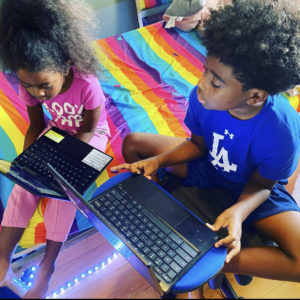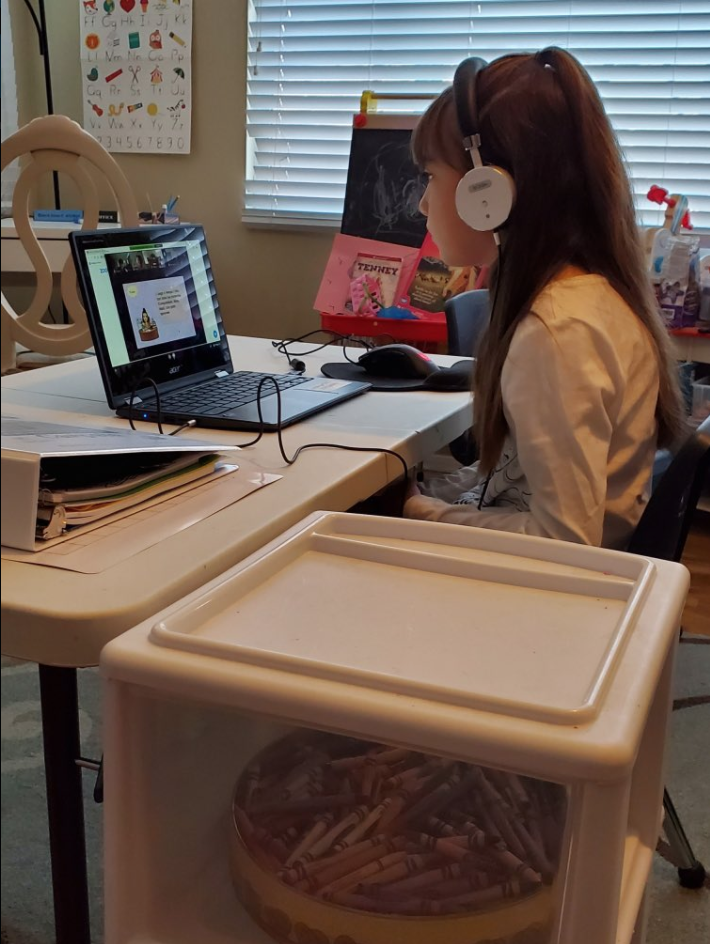Val Verde Unified School District Leads with “Love, Empathy, and Grace” During COVID-19 Pandemic
In mid-August, the Val Verde (California) Unified School District began the 2020–2021 school year with all 20,000 students engaged in high-quality distance learning. Like districts nationwide, Val Verde implemented full distance learning in the spring and again this school year to protect the health and safety of students, staff, and families during the COVID-19 pandemic. But unlike some districts, Val Verde already had the tools, resources, and plan in place to transition students seamlessly to a remote environment thanks to the district’s preparation and participation in the Future Ready Schools® (FRS) network.
“When COVID first hit, we were all in a panic,” Superintendent Michael R. McCormick admits. “We thought, ‘do we need to change strategy?’ But we went right back to our Future Ready plan. If we keep following this, we will be in great shape.”
Val Verde joined the FRS network about six years ago after signing the Future Ready District Pledge. Almost immediately, the district began working on its digital learning plan, analyzing its readiness in the seven key areas (called gears) of the Future Ready Framework and moving through the FRS five-step planning process.
“The Future Ready Framework gave us something to center and focus our thinking,” McCormick says. “We got to work on the [framework] gears, put a team together, surveyed, and spent some time reflecting on and writing our Future Ready plan. Working our way through the gears created a north star for our district. It helped us more broadly communicate the direction we were going, realize the importance of having our technology refresh cycle in place, provide professional development to our teachers, and [share] the vision and direction for the overall organization. The Future Ready Schools® plan was front and center for us.”

Part of that plan included upgrading the district’s technology infrastructure to provide internet connectivity to all schools through a dark fiber network. The district also implemented a one-to-one initiative five years ago to ensure that every student received a district-issued laptop computer to use at school and at home, a key step to ensure equity across the high-needs district. (More than 80 percent of Val Verde’s students come from economically disadvantaged families, 95 percent are students of color, and about 20 percent are learning English as a second language.) With the transition to extended remote learning, the district now is exploring ways to provide high-quality, high-speed internet access to students at home through a private Long-Term Evolution (LTE) network. In the meantime, the district issued more than 900 internet hot spots to students who lack the internet connectivity to support home-based remote learning.
“In some ways, we were more prepared than others [to transition to full distance learning],” McCormick says. “Having the one-to-one initiative for five plus years, investing in the infrastructure, those things have helped but it also has been an investment in our people.”
Providing personalized professional learning to teachers has been integral to Val Verde’s FRS plan since the beginning. During this recent transition to distance learning, though, the district has provided even greater support. Through a memorandum of understanding, the district pays teachers for additional time to engage with professional learning communities with their grade-level and subject-matter colleagues to build lessons they can use with students in the remote learning environment. The district also provides access to an online platform where teachers can access on-demand training resources to learn how to leverage a variety of software tools to support distance learning. Additionally, each school has a technology integration specialist available to provide real-time support and answer teachers’ questions.
Shifting to distance learning also caused the district to think differently about curriculum, instruction, and assessment. During distance learning, the district wants to improve the feedback loops available to students, foster a growth mindset, and build students’ sense of agency and ownership for their work, McCormick explains. Part of that comes from creating a “perfection-free zone,” McCormick says, where students can receive feedback from their teachers and redo select assignments. By its very nature, distance learning also has allowed the district to think differently about how educators use physical learning spaces and time.

“In the face-to-face environment, students must be in the classroom and the teacher has full control over time and space,” McCormick says. “In distance learning, there is a new bidirectional set of expectations. We’re now sharing the learning space with students and parents in their homes. … Here we need to invite students into the learning space.” Part of that comes from building authentic relationships between students and their teachers and among student groups, McCormick says, and by empowering teachers to incorporate students’ personal passions and interests into the learning experience.
“Kids are curious and so often the things they are curious about don’t match with what we are teaching,” says McCormick. “The artful teacher can integrate that passion and merge the students’ interests with what we have to cover.”
Throughout the district’s journey, Val Verde has drawn on the collective expertise of FRS’s 3,500 district members and also served as a mentor to new districts beginning their transition to digital learning. As districts navigate the new school year and the uncertainties the pandemic still may bring, McCormick encourages his fellow district leaders to remain connected to their teams, school-based staff, communities, and each other.
“This is a time to lead with love, empathy, and grace,” McCormick says. “I’ve learned the power of supporting people in this very difficult time. … When you support the teachers and staff, they will show that love, empathy, and grace to the students we serve. It also is a time to think about vulnerability. One of the ways we can strengthen our connections with each other is by sharing our vulnerabilities and acknowledging that there are more questions than answers. But if we work hand in hand, we can find those solutions together.”
Kristen Loschert is editorial director at the Alliance for Excellent Education.
Photos provided by Val Verde Unified School District.
